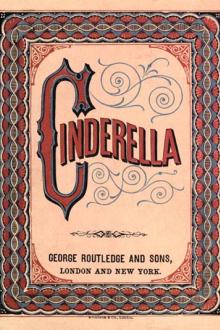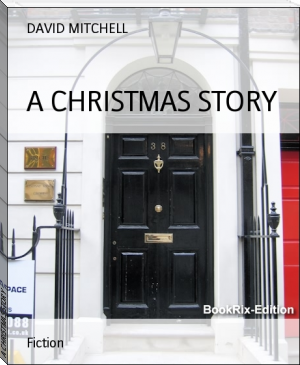Folk-lore of Shakespeare by Thomas Firminger Thiselton Dyer (well read books .TXT) 📕

"Crowdero, whom in irons bound, Thou basely threw'st into Lob's pound."
[16] Mr. Dyce considers that Lob is descriptive of the contrast between Puck's square figure and the airy shapes of the other fairies.
[17] "Deutsche Mythologie," p. 492.
[18] See Keightley's "Fairy Mythology," pp. 318, 319.
It occurs, also, in Massinger's "Duke of Milan" (iii. 2), where it means "behind the arras:"
Read free book «Folk-lore of Shakespeare by Thomas Firminger Thiselton Dyer (well read books .TXT) 📕» - read online or download for free at americanlibrarybooks.com
- Author: Thomas Firminger Thiselton Dyer
- Performer: -
Read book online «Folk-lore of Shakespeare by Thomas Firminger Thiselton Dyer (well read books .TXT) 📕». Author - Thomas Firminger Thiselton Dyer
[139] Mr. Ritson says that Milton “is frequently content to pilfer a happy expression from Shakespeare—on this occasion, ‘night-wanderer.’” He elsewhere calls it “the friar’s lantern.”
[140] Thorpe, “Northern Mythology,” 1852, vol. iii. pp. 85, 158, 220.
[141] “Notelets on Shakespeare,” pp. 64, 65.
[142] Ibid.
[143] See Proctor’s “Myths of Astronomy;” Chambers’s “Domestic Annals of Scotland,” 1858, vol. ii. pp. 410-412; Douce’s “Illustrations of Shakespeare,” pp. 364, 365.
[144] See Patterson’s “Insects Mentioned by Shakespeare,” 1841, p. 145.
[145] “Letters,” vol. i. p. 310; vol. vi. pp. 1, 187.—Ed. Cunningham.
[146] Douce’s “Illustrations of Shakespeare,” 1839, p. 369.
[147] See Tylor’s “Primitive Culture,” vol. i. pp. 364-367.
[148] See Swainson’s “Weather-Lore.”
[149] Batman upon Bartholomæus—“De Proprietatibus Rerum,” lib. xi. c. 3.
[150] Polwhele’s “Cornish Vocabulary.”
[151] Cf. “Macbeth,” iii. 4, “O, these flaws and starts.”
CHAPTER VI. BIRDS.In the present chapter we have not only a striking proof of Shakespeare’s minute acquaintance with natural history, but of his remarkable versatility as a writer. While displaying a most extensive knowledge of ornithology, he has further illustrated his subject by alluding to those numerous legends, popular sayings, and superstitions which have, in this and other countries, clustered round the feathered race. Indeed, the following pages are alone sufficient to show, if it were necessary, how fully he appreciated every branch of antiquarian lore; and what a diligent student he must have been in the pursuit of that wide range of information, the possession of which has made him one of the most many-sided writers that the world has ever seen. The numerous incidental allusions, too, by Shakespeare, to the folk-lore of bygone days, while showing how deeply he must have read and gathered knowledge from every available source, serve as an additional proof of his retentive memory, and marvellous power of embellishing his ideas by the most apposite illustrations. Unfortunately, however, these have, hitherto, been frequently lost sight of through the reader’s unacquaintance with that extensive field of folk-lore which was so well known to the poet. For the sake of easy reference, the birds with which the present chapter deals are arranged alphabetically.
Barnacle-Goose. There was a curious notion, very prevalent in former times, that this bird (Anser bernicla) was generated from the barnacle (Lepas anatifera), a shell-fish, growing on a flexible stem, and adhering to loose timber, bottoms of ships, etc., a metamorphosis to which Shakespeare alludes in “The Tempest” (iv. 1), where he makes Caliban say:
And all be turn’d to barnacles.”
This vulgar error, no doubt, originated in mistaking the fleshy peduncle of the shell-fish for the neck of a goose, the shell for its head, and the tentacula for a tuft of feathers. These shell-fish, therefore, bearing, as seen out of the water, a resemblance to the goose’s neck, were ignorantly, and without investigation, confounded with geese themselves. In France, the barnacle-goose may be eaten on fast days, by virtue of this old belief in its fishy origin.[152] Like other fictions this one had its variations,[153] for sometime the barnacles were supposed to grow on trees, and thence to drop into the sea, and become geese, as in Drayton’s account of Furness (“Polyolb.” 1622, song 27, l. 1190). As early as the 12th century this idea[154] was promulgated by Giraldus Cambrensis in his “Topographia Hiberniæ.” Gerarde, who in the year 1597 published his “Herball, or Generall Historie of Plantes,” narrates the following: “There are found in the north parts of Scotland, and the isles adjacent called Orcades, certain trees, whereon do grow certain shell-fishes, of a white color, tending to russet, wherein are contained little living creatures; which shells in time of maturity do open, and out of them grow those little living things which, falling into the water, do become fowls, whom we call barnacles, in the north of England brant geese, and in Lancashire tree geese; but the others that do fall upon the land perish, and do come to nothing. Thus much of the writings of others, and also from the mouths of people of those parts, which may very well accord with truth. But what our eyes have seen and hands have touched, we shall declare. There is a small island in Lancashire called the Pile of Foulders, wherein are found the broken pieces of old ships, some whereof have been cast thither by shipwreck, and also the trunks or bodies, with the branches, of old rotten trees, cast up there likewise, whereon is found a certain spume or froth, that in time breedeth into certain shells, in shape like those of the mussel, but sharper pointed, and of a whitish color: wherein is contained a thing in form like a lace of silk, one end whereof is fastened unto the inside of the shell, even as the fish of oysters and mussels are. The other end is made fast unto the belly of a rude mass or lump, which in time cometh to the shape and form of a bird; when it is perfectly formed the shell gapeth open, and the first thing that appeareth is the foresaid lace or string; next come the legs of the bird hanging out, and as it groweth greater it openeth the shell by degrees, till at length it is all come forth and hangeth only by the bill. In short space after it cometh to full maturity, and falleth into the sea, where it gathereth feathers and groweth to a fowl, bigger than a mallard, and lesser than a goose; having black legs and bill, or beak, and feathers black and white, spotted in such a manner as is our magpie, which the people of Lancashire call by no other name than a tree goose.” An interesting cut of these birds so growing is given by Mr. Halliwell-Phillipps from a manuscript of the 14th century, who is of opinion that the barnacle mentioned by Caliban was the tree-goose. It is not to be supposed, however, that there were none who doubted this marvellous story, or who took steps to refute it. Belon, so long ago as 1551, says Mr. Harting,[155] and others after him, treated it with ridicule, and a refutation may be found in Willughby’s “Ornithology,” which was edited by Ray in 1678.[156] This vulgar error is mentioned by many of the old writers. Thus Bishop Hall, in his “Virgidemiarum” (lib. iv. sat. 2), says:
That of a worme doth waxe a winged goose.”
Butler, too, in his “Hudibras” (III. ii. l. 655), speaks of it; and Marston, in his “Malecontent” (1604), has the following: “Like your Scotch barnacle, now a block, instantly a worm, and presently a great goose.”
Blackbird. This favorite is called, in the “Midsummer-Night’s Dream” (iii. 1) an ousel (old French, oisel), a term still used in the neighborhood of Leeds:
With orange-tawny bill.”
In “2 Henry IV.” (iii. 2) when Justice Shallow inquires of Justice Silence, “And how doth my cousin?” he is answered: “Alas, a black ousel,[157] cousin Shallow,” a phrase which, no doubt, corresponded to our modern one, “a black sheep.” In Spenser’s “Epithalamium” (l. 82), the word occurs:
Buzzard. Mr. Staunton suggests that in the following passage of the “Taming of the Shrew” (ii. 1) a play is intended upon the words, and that in the second line “buzzard” means a beetle, from its peculiar buzzing noise:
The beetle was formerly called a buzzard; and in Staffordshire, a cockchafer is termed a hum-buz. In Northamptonshire we find a proverb, “I’m between a hawk and a buzzard,” which means, “I don’t know what to do, or how to act.”[158]
Chaffinch. Some think that this bird is alluded to in the song in the “Midsummer-Night’s Dream” (iii. 1), where the expression “finch” is used; the chaffinch having always been a favorite cage-bird with the lower classes.[159] In “Troilus and Cressida” (v. 1) Thersites calls Patroclus a “finch-egg,” which was evidently meant as a term of reproach. Others, again, consider the phrase as equivalent to coxcomb.
Chough. In using this word Shakespeare probably, in most cases, meant the jackdaw;[160] for in “A Midsummer-Night’s Dream” (iii. 2) he says:
Rising and cawing at the gun’s report;”
the term russet-pated being applicable to the jackdaw, but not to the real chough. In “1 Henry IV.” (v. 1). Prince Henry calls Falstaff chewet—“Peace, chewet, peace”—in allusion, no doubt, to the chough or jackdaw, for common birds have always had a variety of names.[161] Such an appellation would be a proper reproach to Falstaff, for his meddling and impertinent talk. Steevens and Malone, however, finding that chewets were little round pies made of minced meat, thought that the Prince compared Falstaff, for his unseasonable chattering, to a minced pie. Cotgrave[162] describes the French chouette as an owlet; also, a “chough,” which many consider to be the simple and satisfactory explanation of chewet. Belon, in his “History of Birds” (Paris, 1855), speaks of the chouette as the smallest kind of chough or crow. Again, in “1 Henry IV.” (ii. 2), in the amusing scene where Falstaff, with the Prince and Poins, meet to rob the travellers at Gadshill, Falstaff calls the victims “fat chuffs,” probably, says Mr. Harting, who connects the word with chough, from their strutting about with much noise. Nares,[163] too, in his explanation of chuff, says, that some suppose it to be from chough, which is similarly pronounced, and means a kind of sea-bird, generally esteemed a stupid one. Various other meanings are given. Thus, Mr. Gifford[164] affirms that chuff is always used in a bad sense, and means “a coarse, unmannered clown, at once sordid and wealthy;” and Mr. Halliwell-Phillipps explains it as spoken in contempt for a fat person.[165] In Northamptonshire,[166] we find the word chuff used to denote a person in good condition, as in Clare’s “Village Minstrel:”
Shakespeare alludes to the practice of teaching choughs to talk, although from the following passages he does not appear to have esteemed their talking powers as of much value; for in “All’s Well That Ends Well” (iv. 1), he says: “Choughs’ language, gabble enough, and good enough.” And in “The Tempest” (ii. 1), he





Comments (0)